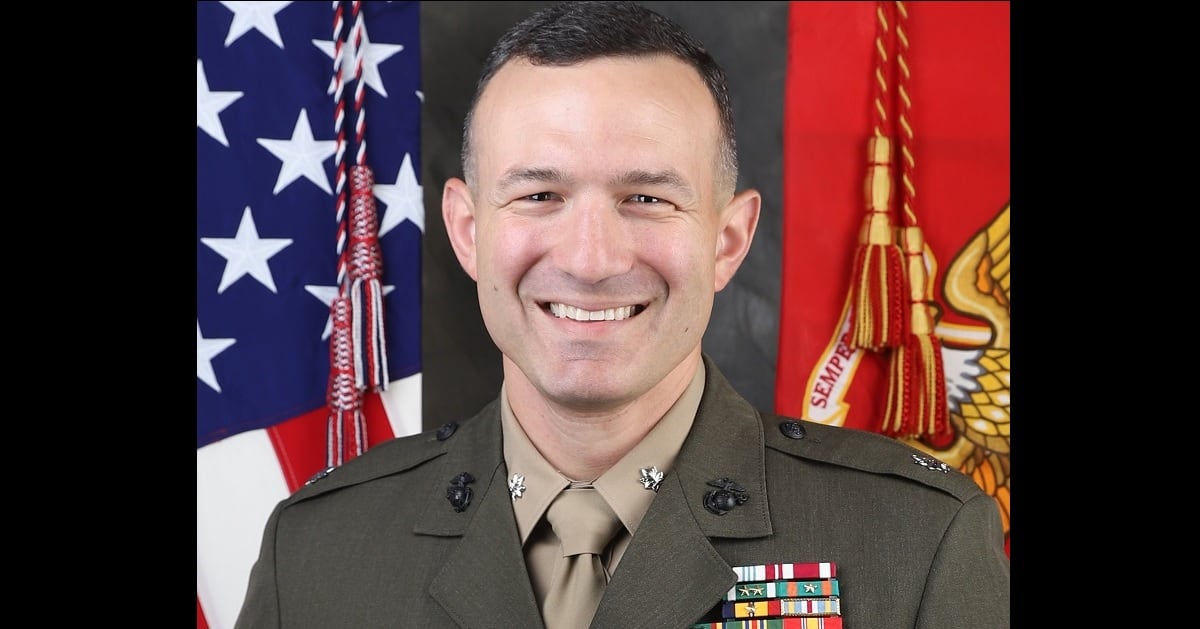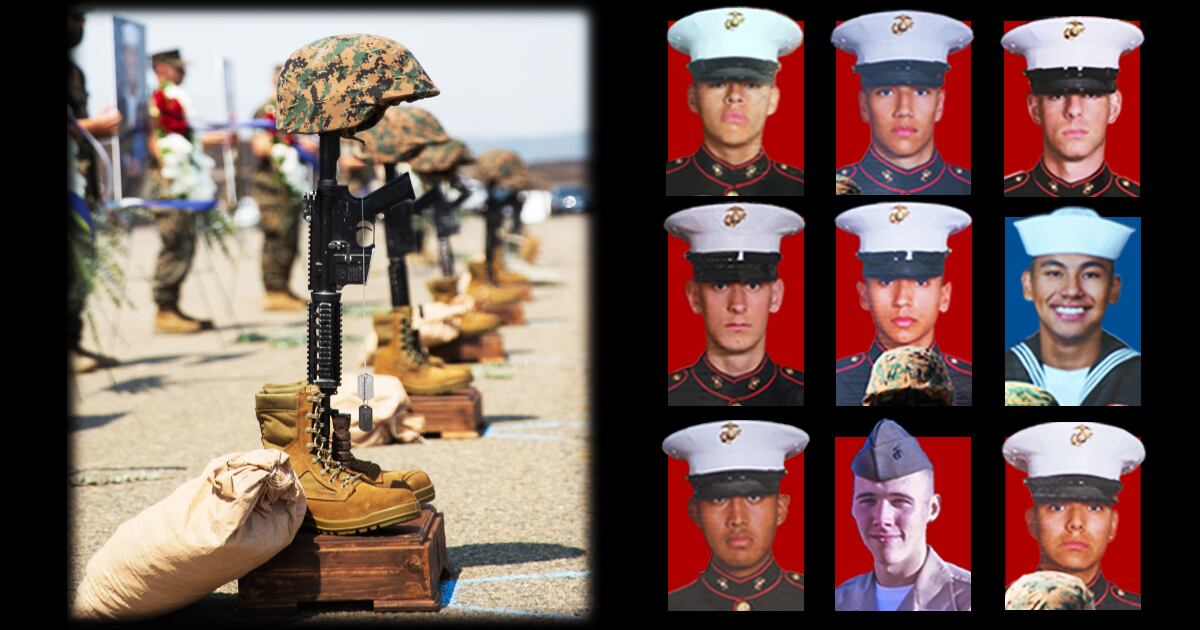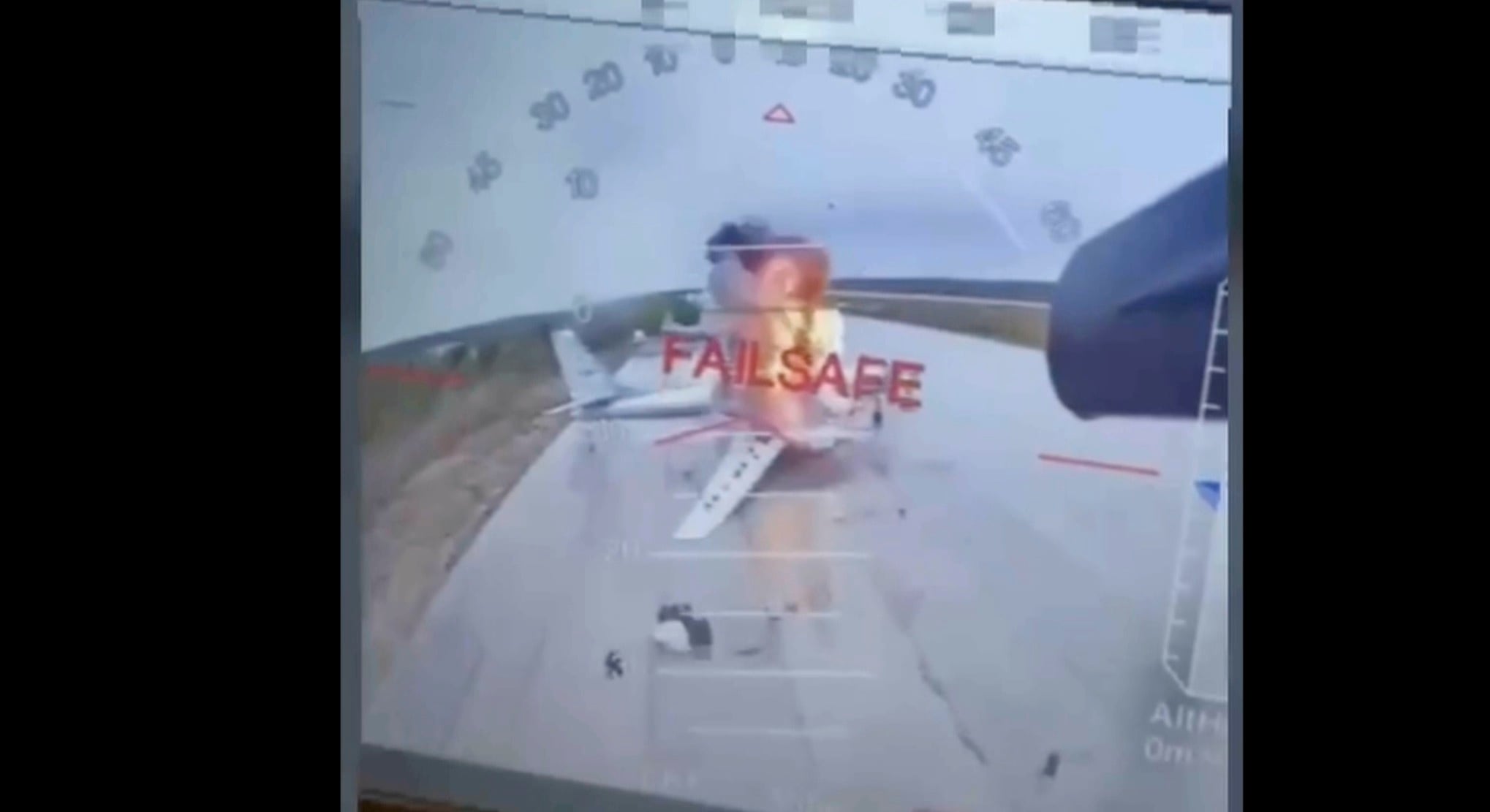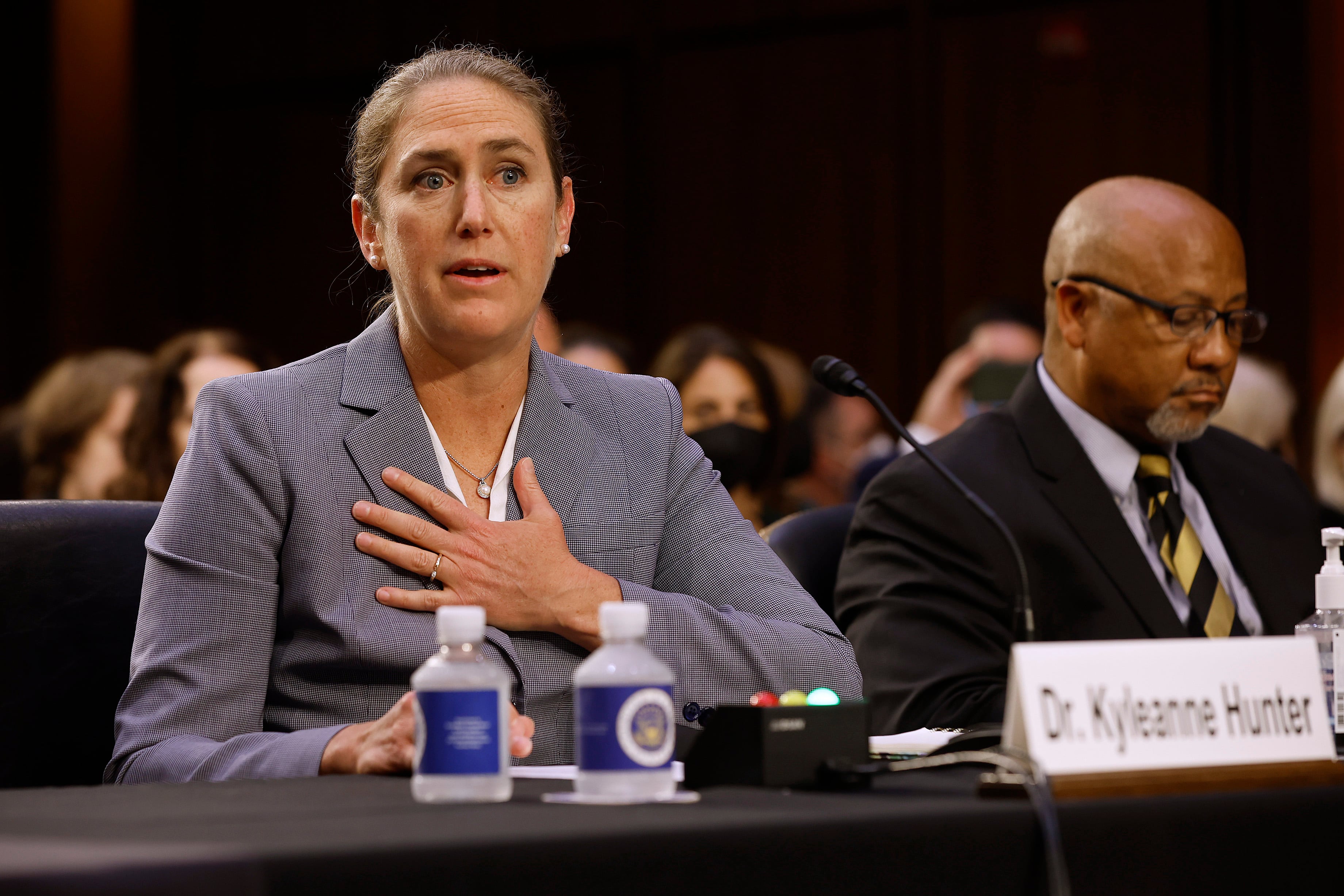Secretary of the Navy Carlos Del Toro has issued letters of censure to three Marine Corps officers and two Navy officers for leadership failures related to the sinking of an amphibious assault vehicle off the coast of San Clemente Island, California, July 30, 2020, that killed eight Marines and one sailor.
Del Toro said the punishment stemmed from the five officers’ “inadequate leadership and execution of their oversight duties,” in a press release issued Monday.
The censures provide summarized details of those failings, mostly pointing to negligence in ensuring safety standards, accountability and proper briefings to the inherent dangers of waterborne operations.
Secretarial Letters of Censure, or SLOCs, are administrative actions, according to the release, but bear no legal weight to the following officers:
- Retired Marine Lt. Gen. Joseph Osterman, then-commanding general of I Marine Expeditionary Force
- Marine Col. Christopher Bronzi, then-commanding officer of the 15th Marine Expeditionary Unit
- Navy Capt. Stewart Bateshansky, then-commander of Amphibious Task Force
- Navy Capt. John Kurtz, then-commanding officer of the amphibious transport dock Somerset
- Marine Lt. Col. Keith Brenize, then-commanding officer of 3rd Assault Amphibian Battalion
Each of the five letters is a single page and contains a paragraph or two detailing the specific failings, listed below, of the recipient that led to the censure. Each of the officers can respond in writing to the censure and, if desired, have their rebuttal included in the official record. While not a legal punishment, such censure letters can impact a military member’s career and chances at advancement.
Osterman: “As the (commanding general), IMEF, you failed to recognize and alleviate risks associated with conducting waterborne operations and to ensure material readiness of the AAVs assigned to the 15th MEU. You also did not fully appreciate the potential negative impact of COVID-related challenges on the 15th MEU as your subordinate commanders adjusted training and modified schedules in their attempt to meet mission requirements. While no single act or decision led to this tragedy, ultimate accountability rests with you.”
“You failed to identify and mitigate the human, material and training failures that resulted in this mishap. Accordingly, you are censured for failing to effectively ensure appropriate levels of training and material readiness in units under your command.”
Bronzi: “The investigations determined you knew or should have known required pre-deployment waterborne training was not completed and the AAVs assigned to the 15th MEU were in a degraded state of readiness. Furthermore, the investigations revealed critical safety measures were not implemented during the mishap, in violation of applicable directives. Accountability for these failures rests with you.”
“You are censured for failing to identify and mitigate the training and material readiness failures that resulted in this mishap.”
Bateshansky: The investigation “…ultimately found that there were gaps and seams in the planning of the exercise at issue as well as its execution, all of which were in your span of control as the (commander, Amphibious Task Force). The confirmation brief that you approved left doubt in the minds of subordinate commanders with respect to the authority to abort or delay the AAV launch from the beach. Furthermore, the operational risk management procedures used for the exercise confirmation brief did not identify all significant hazards of AAV waterborne operations, including material casualties, loss of communications, and the potential for an AAV to sink.”
“Commanders are responsible for the proper execution of duties and performances of their subordinates and you failed to do so. Accordingly, you are hereby censured.”
Kurtz: “Although the investigation did not establish that any of USS SOMERSET’s actions or inactions caused the sinking, it ultimately found that you failed in your duties to oversee AAV operations as the primary control officer. Specifically, you failed to exercise positive control over the AAVs during their ship-to-shore transit. Additionally, some of the AAV-associated briefings did not include a robust discussion of the actual dangers involved in AAV operations (e.g., vessels in distress and safety boats). As a result, your crew was poorly informed of the risks and measures required for safe AAV operations. Lastly, there was confusion regarding how safety boat requirements would be met, and you did not seek to verify those requirements were met once you became aware that AAVs were in the water.”
“As the primary control officer, you ultimately bear responsibility to ensure positive control and leadership oversight over waterborne AAV operations and you failed to do so. Accordingly, you are hereby censured.”
Brenzie: The “… required training was not completed, and the AAVs assigned to the 15th MEU were in a degraded state of readiness. Accountability for these failures rests with you.”
“Accordingly, you are censured for failing to effectively ensure appropriate levels of training and material readiness in your command.”
An earlier Marine Corps investigation found poor training, shabby maintenance and leaders’ erroneous judgments led to the July 30, 2020, sinking of the AAV, one of the deadliest Marine training accidents in decades.
In December 2021, the Marine Corps announced that the aging AAV, since replaced by the Amphibious Combat Vehicle, will no longer be deploy or used in waterborne training.
There were 16 people aboard the AAV when it sank rapidly in 385 feet of water. Nine died in the incident:
- Lance Cpl. Guillermo S. Perez, 19, of New Braunfels, Texas, rifleman
- Pfc. Bryan J. Baltierra, 18, of Corona, California, rifleman.
- Lance Cpl. Marco A. Barranco, 21, of Montebello, California, rifleman.
- Pfc. Evan A. Bath, 19, of Oak Creek, Wisconsin, rifleman.
- Navy Hospital Corpsman Christopher Gnem, 22, of Stockton, California.
- Pfc. Jack Ryan Ostrovsky, 20, of Bend, Oregon, rifleman.
- Cpl. Wesley A. Rodd, 22, of Harris, Texas, rifleman.
- Lance Cpl. Chase D. Sweetwood, 18, of Portland, Oregon, rifleman.
- Cpl. Cesar A. Villanueva, 21, of Riverside, California, rifleman.
Brenize and Bronzi were both removed from command following the incident. Officials also fired Maj. Gen. Robert Castellvi, then 1st Marine Division commander, and Lt. Col. Michael J. Regner, who commanded the landing team for 1st Battalion, 4th Marine Regiment, 15th MEU at the time.
Regner faced a Board of Inquiry at Camp Pendleton, California, Jan. 4 over the incident.

Officials noted that Regner was relieved based on a “substantial amount of information and data,” Marine Corps Times reported at the time.
In part, the commander relied on other Marines for the swim status of the Marines aboard the AAV before the exercise. At least two were not certified to swim. The lieutenant colonel also knew that the vehicle had mechanical problems but had been told they’d been fixed.
The platoon made repairs in a rush to meet a deadline, according to the investigation.
Bronzi, then-15th MEU commander, was also fired following the sinking.
The investigation found platoon members without proper training had been given amphibious assault vehicles in “poor condition” that had not been used in more than a year.
The report also noted that it took the AAV 45 minutes to sink and had leaders on the surface sounded the distress signal sooner, some may have been saved.
As the water levels rose, troops who’d only trained on land stayed inside the broken-down vehicle in seas rougher than expected, according to the findings.
They were not told to remove their helmets, weapons and other gear. That call likely prevented them from being able to escape.
The victims’ life jackets also may have prevented them from removing their body armor. That extra weight would have negated the life jackets due to the weight, according to the investigation.
Emergency lights did not work and there were no markings on a side hatch, which left troops clawing around in the dark, using their cellphone lights to find an exit, according to the findings.
They then struggled to open the hatch, losing time. As they finally pried open the door, another assault vehicle came to rescue the crew but collided with the distressed vessel. The sinking AAV then turned broadside into a wave.
The troops were knocked off their feet, and water flooded through the hatch and into the compartment, causing the vehicle to descend to the sea floor.
Todd South has written about crime, courts, government and the military for multiple publications since 2004 and was named a 2014 Pulitzer finalist for a co-written project on witness intimidation. Todd is a Marine veteran of the Iraq War.





